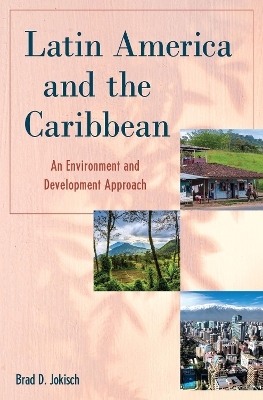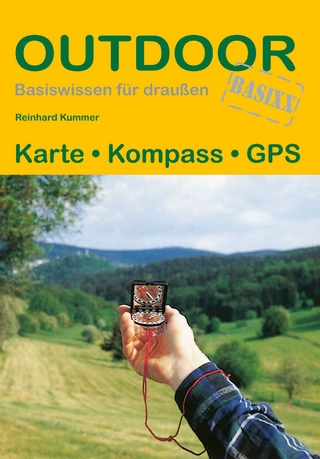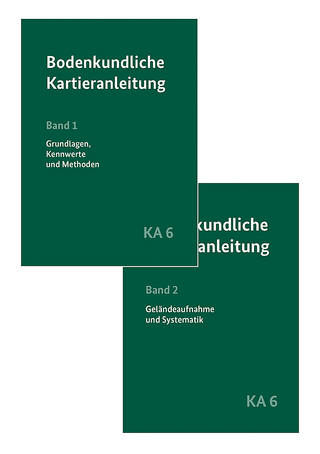
Latin America and the Caribbean
Rowman & Littlefield (Verlag)
978-1-5381-5278-2 (ISBN)
Through the twin themes of the environment and development, Brad Jokisch introduces students to the regions of Latin American and the Caribbean through a concise, comprehensive, and cohesive overview. Designed for courses in either geography or Latin American Studies, this text covers the physical geography, environmental hazards, and a concise history of the region, along with treatment of economic issues—including China’s role—urbanization, population trends, and international migration. Regional chapters on Brazil, Mexico, Central America and the Caribbean, the Andes, and the Southern Cone ensure that students understand the distinct areas of Latin America as well as the region as a whole.
Key features include:
Extensive maps, figures, and tables to help students visualize the material
Chapter opening learning objectives and key terms lists to help organize important concepts
End-of-chapter conclusions and summary points and a glossary to aid in studying
Excellent treatment of current research from geography and across the social sciences to reinforce the state of the field
A key case study chapter on Amazonian deforestation and development
In-depth analysis of the commodity boom, the Pink Tide, the rise of China, certification programs, and the illicit drug trade
Brad Jokisch is associate professor of geography at Ohio University. His research is at the nexus of migration, environment, and development. His research has focused on Ecuador, migration, and environment and development issues. He was chair of the Conference of Latin American Geography (CLAG), and Director of Latin American Studies at Ohio University.
Preface
Chapter 1. A Theoretically Informed Regional Approach
What is Latin America and the Caribbean?
Regions and the Invention of Latin America
Development Geography and Development Theory
Nature and Society in Latin America: Hazards and Political Ecology
Chapter 2. The Physical Geography and Hazards of Latin America and the Caribbean
The Physical Processes Shaping Weather and Climate
Major Climates of Latin America and the Caribbean
Tectonic Activity and Landforms
Natural Hazards and Disasters
The Impacts of Global Climate Change
Chapter 3. Indigenous Peoples and European Arrival
The First Peoples
Major Indigenous Civilizations and their Precursors
Agriculture in the Americas
The Conquest and Cultural Catastrophe
Conclusion
Chapter 4. Historical Foundations: From Colonial Latin America to the Early 20th Century
The Political Geography of Colonial Latin America and the Caribbean
Mercantilism, Labor, and the Colonial Economy
Independence and the End of the Colonial Era
Early Republican Latin America: Geopolitical Wrangling
Exports and Immigrants: The late 19th Century Economy
Here Come the Gringos: Gunboat Diplomacy, a Canal, and the Rising Influence of the United States
Conclusion
Chapter 5. The Economic Geography of Latin America and the Caribbean
Economic Crises and Rethinking the Export-Led Model
Debt, Recession, and the End of Import Substitution Industrialization (ISI)
The Neoliberal Era
The Commodity Boom, China, and the Pink Tide of the 21st Century
Overview of the Contemporary Economic Geography of LAC
COVID-19: An Economic and Health Crisis
Chapter 6. Latin America in Transition: From Population Boom to an Aging Population
The Rapid Growth Era (1950-2000)
Entering the Slow Growth Era
Aging and the End of Population Growth? Latin America’s Population Future
The Impact of COVID-19 on Latin America and the Caribbean’s Population.
The End of Population Growth?
Concluding Thoughts on Population and Development
Chapter 7. International Migration: Implications for Development
What Causes International Migration?
An Overview of International Migration from Latin America and the Caribbean
International Migration within Latin America and the Caribbean (Intraregional)
Human Trafficking and Migration
Migration and Development?
The Trump Administration and Latin American Immigration
The Biden Administration and Immigration: A Mixed Message
Summary
Chapter 8. The Urban Worlds of Latin America
Urbanization in the 20th Century
Environmental Problems of Latin American Cities
Climate Change and Latin American Cities
Conclusion
Chapter 9. Development and Deforestation in the Amazon
The Value of Forests
Opening the Amazon: Integrating the Amazon into National Development, 1960s-1980s
Cattle, Soy, and the Global Integration of the Amazon 1990-2021
Conserving the Amazon? Protected Areas and Indigenous Lands
The Future of Amazonia?
Chapter 10. Mexico
The Physical Geography of Mexico
The Ethnic Diversity of Mexico
Demographic Trends
Mexico in the Global Economy
Deforestation, Land Use Change, and Protected Areas
Chapter 11. Central America and the Caribbean
The Physical Geography of Central America and the Caribbean
The Ethnic Diversity of Central America and the Caribbean
Demographic Trends of Central America and the Caribbean
Central America and the Caribbean in the Global Economy
Deforestation, Land Use Change, and Protected Areas
Chapter 12. The Andes
The Physical Geography of the Andean Republics
The Ethnic Diversity of the Andes
Demographic Trends of the Andes
The Andes in the Global Economy
Deforestation, Land Use Change, and Protected Areas
Chapter 13. The Southern Cone
The Physical Geography of the Southern Cone
The Ethnic Diversity of the Southern Cone
Demographic Trends in the Southern Cone
The Southern Cone in the Global Economy
Deforestation, Land Use Change, and Protected Areas
Chapter 14. Brazil
The Physical Geography of Brazil
The Ethnic Diversity of Brazil
Demographic Trends in Brazil
Brazil in the Global Economy
Bibliography
Glossary
About the Author
Index
| Erscheinungsdatum | 13.02.2023 |
|---|---|
| Reihe/Serie | Changing Regions in a Global Context: New Perspectives in Regional Geography Series |
| Zusatzinfo | 41 BW Photos, 38 Graphs, 28 Maps, 54 Tables |
| Verlagsort | Lanham, MD |
| Sprache | englisch |
| Maße | 178 x 248 mm |
| Gewicht | 776 g |
| Themenwelt | Naturwissenschaften ► Geowissenschaften ► Geografie / Kartografie |
| Sozialwissenschaften ► Politik / Verwaltung | |
| ISBN-10 | 1-5381-5278-9 / 1538152789 |
| ISBN-13 | 978-1-5381-5278-2 / 9781538152782 |
| Zustand | Neuware |
| Informationen gemäß Produktsicherheitsverordnung (GPSR) | |
| Haben Sie eine Frage zum Produkt? |
aus dem Bereich


